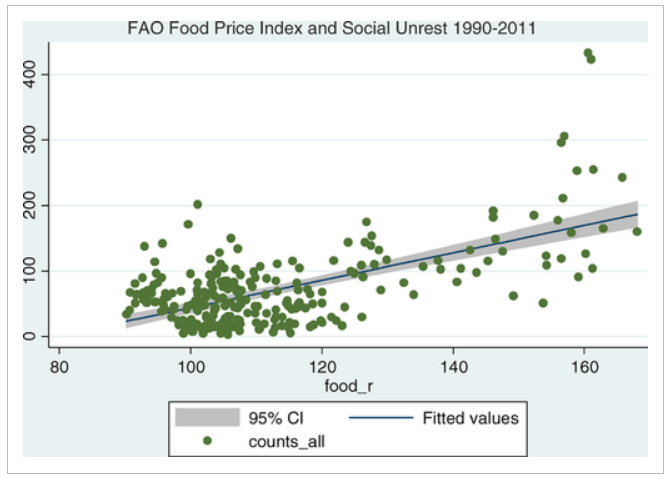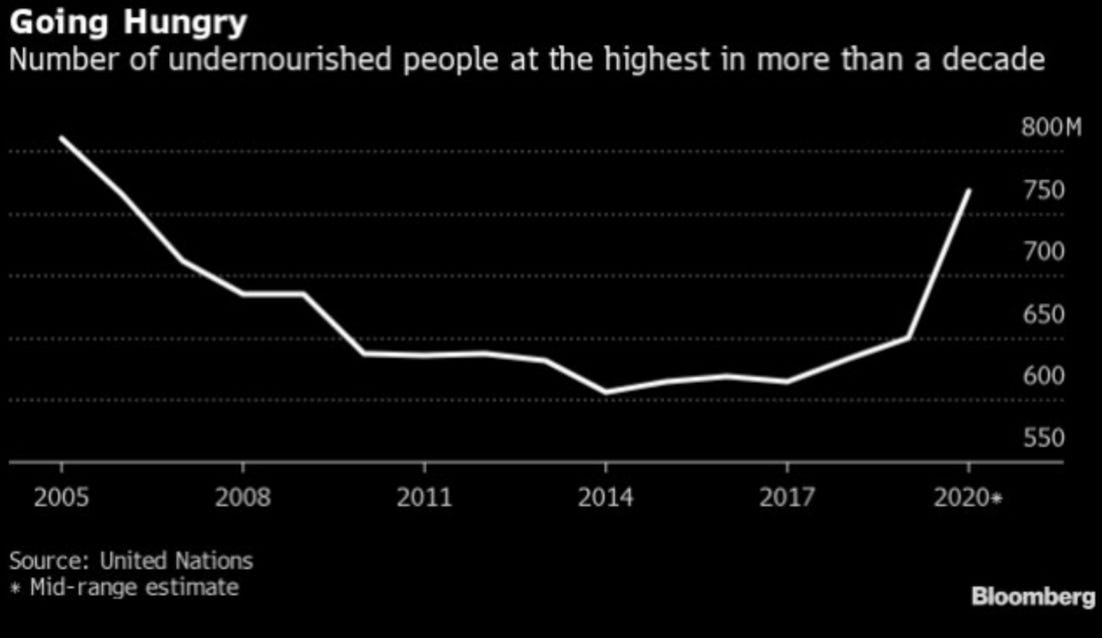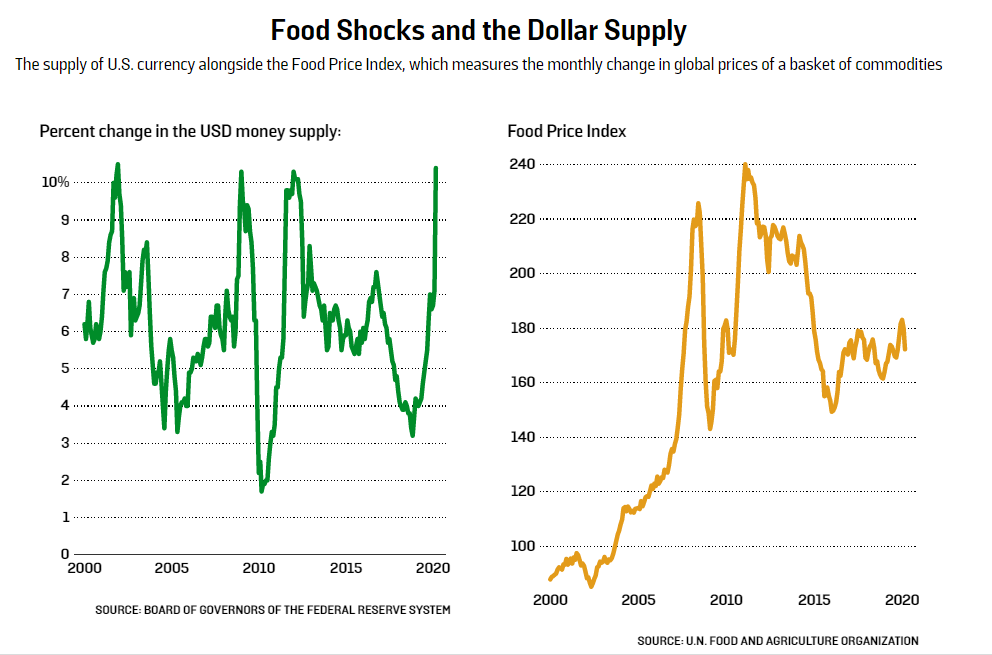Amongst rising energy and commodities prices (that we talked about in the last post) there has been another concerning development, the impact of which can be significantly non-linear. This development is the parallel rise in food prices across the globe. It comes as no surprise that rising food prices can lead to heightened risks of socio-political unrests.
Bellemare (2014) mentions how a 51 percent increase in food prices from January 2007 to March 2008 (albeit settling down afterwards) caused the first recent food crisis which was followed by growing unrests across developing and developed world. This was repeated in 2011. Food riots globally jumped by 250 percent above their average between 2005 -2011 including events in Egypt, Libya and Syria.
Linear Relationships between the FAO's Food Price Index and Social Unrest with 95% Confidence Interval, 1990–2011 from Bellemare (2014).
Currently the United Nations World Food Price index has touched a decade high. In May 2021, food prices were 40 percent higher than an year ago - the fastest increase since 2011. Last month in Sri Lanka, a state of economic emergency was established as food prices soared as the Sri Lankan Rupee fell against the dollar. The country is also facing significant debt issues. Pakistan is facing issues in this regard as well, so is India. The condition in emerging markets is worse as they already face a multitude of issues in terms of debt servicing, strong dollar and of course sky-high crude oil prices. According to an analysis, global food prices were rising ever since 2000s. (For causes of food price inflation see this article here).
Covid-19 has only added to the worries. According to the World Food Programme (WFP) around an additional 250 million people will suffer from “acute hunger”. In many of the poor countries the rise in food price inflation has gone up to 20 percent such as Lebanon where it stood at 226 percent a few months back. Other countries such as Nigeria, Argentina are also facing grave issues. The recent energy crisis is also fuelling this price increase in perishables as shipping container rates continue to climb, various industries such as fertilizers face cost increases and crops being diverted to produce more bio-fuel.
With rising inflation, an unfolding energy crisis, this increase in food prices weighs heavily on the overall set of worries that the global economy currently face. Number of people that are undernourished is at its highest in a decade while we produce enough to feed 10 billion people which shows that there are many other structural factors (such as affordability) that needs to be fixed.
Also, the rise in dollar supply as a result of COVID relief programs by the U.S. and resultant increase in dollars has made matters worse. As food prices are denominated in dollars (as well as all other commodities), the policies of Federal Reserve Bank of America has a profound effect on food prices too.
The positive correlation between rising food prices and instability is well established. COVID-19 has added to the current worries. While we look at the story of global economic recovery, it is highly important to take into account those hungry people that have been suffering way before this recent pandemic. We shouldn’t ignore them, after all, they wield the power to shape history.








Current reporting in France suggests that low- and even middle-income families are dealing with unprecedented "food insecurity," which in an advanced Western European economy is very worrying (particularly since I live here!). As the report quotes in today's Le Parisien, "We heat, or we eat." Very troubling. Excellent analysis and plenty of information here to think on. Thanks, as always. R. Stoner